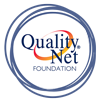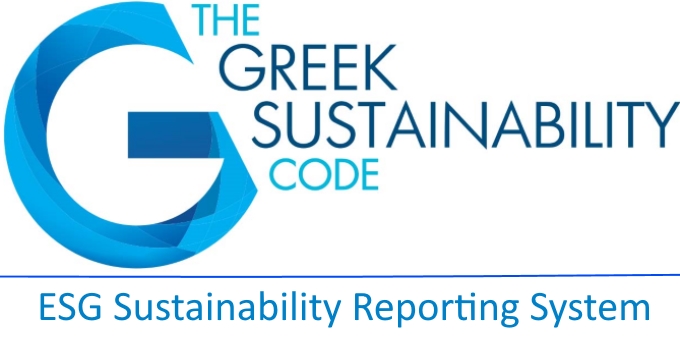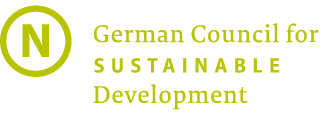LEVEL D
The following table has all the information for selected LEVEL D
PILLAR: STRATEGY
3. Objectives
CRITERIA DESCRIPTION
TOPICS
The Organization discloses what qualitative and/or quantitative Sustainable Development & Corporate responsibility goals are set and operationalized, and how their level of achievement is monitored.
- Whether long-term goals are pursued for the Organization’s material activities with regard to Sustainable Development & Corporate Responsibility and if so, which ones.
- How the objectives are rated and prioritized and how their achievement is monitored.
- How these objectives are classified in the context of the social challenges that the Organization is confronted with.
INDICATORS
GRI
Not applicable
Not applicable
EFFAS
Not applicable
Not applicable
PILLAR: PROCEDURES
7. Monitoring
CRITERIA DESCRIPTION
TOPICS
The Organization discloses how and what performance indicators (KPI’s) on sustainable development & corporate responsibility are integrated into its periodical internal planning and control and how the reliability, comparability and consistency of the data applied to internal controls and external communication are safeguarded through appropriate processes.
- If the Organization has already determined performance indicators generally starting with specific environmental parameters that describe consumption of energy or emissions per employee or per ton of product; in this respect, the range of possible answers extends from a simple reference to regularly reported environmental data to control systems.
- If the Organization submits repeated reports, it is important to select the same reference figures in each case, such as whether an indicator is calculated on per employee (head count) or full-time equivalent basis, and adhere to the selected method.
- If the Organization chooses to change the method of calculation of an index, it should be described clearly and proceed to the recalculation (if possible) of the subject index for previous periods for comparison purposes.
INDICATORS
GRI
Not applicable
Not applicable
EFFAS
S06-01:
Percentage of total suppliers and supply chain partners screened for compliance in accordance with ESG-criteria.
S06-02:
Percentage of suppliers and supply chain partners audited for ESG compliance.
S06-01:
Percentage of total suppliers and supply chain partners screened for compliance in accordance with ESG-criteria.
S06-02:
Percentage of suppliers and supply chain partners audited for ESG compliance.
9. Stakeholder Engagement
CRITERIA DESCRIPTION
TOPICS
The Organization discloses how the socially and economically relevant stakeholders are identified and integrated into the Sustainable Development & Corporate Responsibility process. It is disclosed whether and how an ongoing dialogue takes place with them and how the results are integrated into the Sustainable Development & Corporate Responsibility process and strategy.
- How the most important stakeholders for the Organization are identified.
- Who these stakeholders are.
- Whether and how the Organization is in dialogue with these interest groups.
INDICATORS
EFFAS
Not applicable
Not applicable
PILLAR: ENVIRONMENT
11. Usage of Natural Resources
CRITERIA DESCRIPTION
TOPICS
The Organization discloses the extent to which natural resources are used for its activities, providing information even for energy controls. Possible options here are materials, the input and output of water, soil, waste, energy, emissions, land and biodiversity as well as emissions for the life cycles of products and services.
- To what extent the Organization uses the natural resources that are of key importance for its activity. Ideally, provide data to back this up regarding the use of natural resources (non-renewable material, water, energy sources etc)
- Whether the Organization knows what environmental impacts caused by its firm’s activity.
- Whether the Organization keeps an eye on the effects that arise throughout its products life cycle and where the Organization exerts its influence here.
INDICATORS
GRI
SRS-301-1:
Materials used by weight or volume.
SRS-302-1:
Energy consumption within the organisation.
SRS-303-1:
Water withdrawal by source.
SRS-301-1:
Materials used by weight or volume.
SRS-302-1:
Energy consumption within the organisation.
SRS-303-1:
Water withdrawal by source.
EFFAS
E04-01:
Total Waste in tonnes.
E05-01:
Percentage of total waste which is recycled.
E01-01:
Total energy consumption.
E04-01:
Total Waste in tonnes.
E05-01:
Percentage of total waste which is recycled.
E01-01:
Total energy consumption.
PILLAR: SOCIETY
16. Qualifications
CRITERIA DESCRIPTION
TOPICS
The Organization discloses what goals it has set and what measures it has taken to promote the employability of all employees, i.e. the ability of all employees to participate in the working and professional world, and to adapt it to demographic change.
- Whether the Organization keeps an eye on demographic changes.
- What the Organization does to ensure that its employees can contribute their services in the enterprise in the best possible way in the long term (e.g. programmes relating to health management or age-appropriate job design).
INDICATORS
GRI
Not applicable
Not applicable
EFFAS
Not applicable
Not applicable






